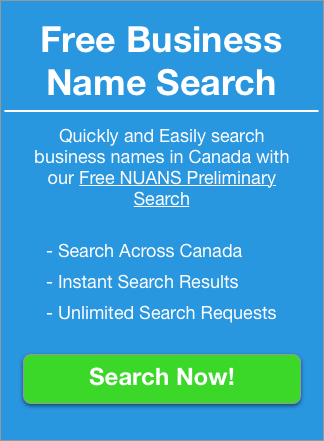How to Choose Catchy Business Names

If you’re starting a business or just rebranding your existing one, the biggest decision you’re going to make is the name.
Catchy business names make businesses – and boring ones can sink them. But finding a name can feel a little bit like Goldilocks looking for the porridge that’s just right, but you just can’t seem to find it!
What’s more, with digital considerations like SEO, domain registration, and competition, choosing a name can seem like an uphill battle.
But we’re here to help. Here’s how you can choose catchy business names that suit you, that will perform well online, and will help you find (and keep!) customers.
Here we go!
1. Make Your Business Activity Clear In The Name
The temptation when you’re developing catchy business names is to get really abstract and creative.
For example, you might want to name your new cleaning business ‘Reflection’ because you get homes so clean that people can see their reflection in every surface.
And while that might make perfect sense to you…
Customers are unlikely to make the leap to cleaning quite so quickly. They might think that you offer mirror installation services, or you are a pool installer or a poet. Who knows?
Instead, you might want to name your business something straight forward, like ‘Toronto Cleaning Services” if you service Toronto, or ‘Gleam Clean’ which makes it clearer what your business does.
The best way to get a name that works (and converts) is to provide the benefit to the customer in the name.
2. Does Your Name Work With SEO?
A name that doesn’t work online is not a name worth pursuing. It doesn’t matter how good you think it is or how powerful you think your value proposition is.
If it doesn’t work online, then it’s a no-go.
How do you learn if your catchy business names work online? Easy.
First, get a Google AdWords account and see if anyone is bidding on your preferred term. If your perfect name is already seeing a lot of activity, you might want to pick a different one to save some money.
Second, find out if any major players in your industry (or other industries) are dominating the search engine result pages (SERPs). If they’re in your industry, you’re probably going to go up against them at some point anyways, but there’s no reason to be David against Goliath before you have to.
Third, make sure that it doesn’t have any nefarious or sultry associations. For example, if you’re a silk importer, naming your business Silk Road is probably a bad idea.
Finally, Google around see what else comes up when you type in your desired catchy business names. Do you think there’s room in the market for you there?
3. Check Domain Availability
Following on from your rapid SEO analysis, you need to check if the domain is available. This is a simple job of going to a domain hosting company (whoever you’re hosting your website with can do this, even if it’s something like WordPress) and searching for your domain.
You’ll get a list of all the available domains with their respective endings that you can purchase. If you’re buying a domain, make sure to get a range of top level domains (TDLs).
TDLs are the bits after the dot, so .com, .org, .edu and .io are all top level domains.
If you’re buying one (for example, .ca), then it’s usually worth buying others like .com and .net, both for SEO reasons and so someone else can’t snap it up.
And if your domain is taken, Bustaname can help you find similar domains that are free.
4. Conduct Some Quick Competitive Research
Since you’re looking at domains and SEO, it’s worth doing some competitive research to find out what else is out there when it comes to your name.
First, check to see if anyone else has any of your catchy business names. You can probably rule out anything that’s already owned. It’s worth checking both informal registries through Google as well as formal ones like the NUANS Name Search.
You’ll also want to check and see what keywords around your business are available as well as how much traffic they’re generating and how much they cost. Using Google AdWords and Google Insights, you can get a lot of information about the industry you’re about to move into.
Insight that can prove invaluable:
- It will help you know what people are looking for and might help you choose your name
- It’ll help you identify where there’s a hole in the market for you to fill
5. Consider your other creative collateral
It goes without saying that your name doesn’t stand alone. It needs to work in a broader context of your other business collateral. This is where your overall brand values really come to the forefront.
You need to make sure you pick a name that will work with your logo, your slogan or tagline (if you have one) and in all the advertising mediums you’re planning on running.
If you can, choose a name that’s versatile enough to work in all mediums in case you grow to the size of IBM and need to run super bowl ads.
Of course, nothing in a branding project will happen in a vacuum. If you’re planning your name, you should be thinking about taglines and logos as you go, with an idea of how they all work together. If you’ve got a great name, but just can’t get it to work in a lot of formats, or you can’t get a tagline that rolls off the tongue then you probably need to keep looking at different catchy business names.
6. Ask Around… But Don’t Let A Committee Name Your Business
Don’t let your business name be created by committee.
However, it is good to ask around and see what other people think of your ideas. It’s good to talk through these ideas and see what resonates and what doesn’t.
But be warned – you’ve done loads of research at this point, so you don’t want to get talked out of a great name just because Uncle Bill doesn’t like it. Don’t be afraid to stick to your guns.
7. K.I.S.S.
Keep it simple, silly.
The best business names tend to be simple. They state simply what they do, how they do it, and what the customer gets. Waffle House is a great example of this. It’s a 24/6 house that serves waffles. Enough. Said.
8. Get help
You don’t need to do everything yourself. And this is never truer than when you’re coming up with a catchy name for your company.
Why?
Because there’s a whole profession who specialize in this. It’s called copywriting. And with hundreds of freelancers out there to help you, sometimes it just makes sense to outsource.
There are really two approaches you can take.
First, you involve a freelancer early by sharing brand values and tone, as well as what you want to convey to your customers. Then, they do most of this legwork for you to present a few highly refined renditions.
Alternatively, you can come up with 3-5 finalists and present them all to the copywriter, who can help you polish them to get them looking really great.
However you choose to do it, a copywriter is a specialist at finding exactly the right word, and even just talking to one can often improve the end result.
9. Test, Test, Test!
Once you’ve narrowed down your list of potentially hundreds of ideas, you need to test them out with your target audience (note: some businesses will have an easier time tracking down their target audience).
But the idea is, using A/B testing software like Unbounce, you can quickly decide which of your top names is empirically the best. Now, this doesn’t mean that you have to choose that name – but it does give you a sense of structure for your name choosing.
Conclusion
There you have it.
A simple, easy to follow guide for helping you narrow if not choose catchy business names for your next venture. And with our easy registration service, you can solidify your name as a business as soon as you hit the one that’s just right.
Get started with your business registration today!

